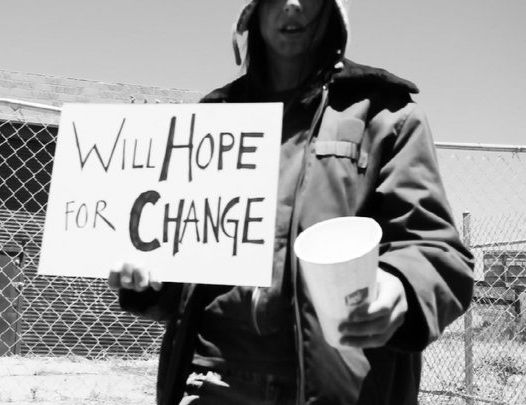 WSWS– A report released in July by the advocacy groups National Association
for the Education of Homeless Children and Youth (NAEHCY) and First
Focus reveals the explosive growth of homelessness among public school
students during the economic crisis.
WSWS– A report released in July by the advocacy groups National Association
for the Education of Homeless Children and Youth (NAEHCY) and First
Focus reveals the explosive growth of homelessness among public school
students during the economic crisis.
Based on Federal data from the US Department of Education, the number of students identified as homeless by public school districts rose by more than 40 percent between the 2006-2007 school year and 2008-2009, to 956,914. The figure has almost assuredly passed one million in the current school year.
That well over one million public school students are homeless is a damning indictment of the entire social order. The staggering growth in student homelessness took place simultaneously with the transfer of trillions of dollars in public funds to Wall Street, overseen by the administrations of former President George W. Bush and current President Barack Obama.
No part of the country was spared. NAEHCY and First Focus found that 70 percent of school districts reported an increase in homelessness since 2007-2008, and 39 percent reported enrolling more homeless students in the first six months of the 2009-2010 school year than in the entire previous year.
The worst affected states have been Texas and Iowa, with increases of 139 and 136 percent, respectively, between the 2006-2007 and 2008-2009 school year. Other hard-hit states include New Mexico (91 percent), Kansas (88 percent), New Jersey (84 percent), New York and South Dakota (73 percent), and Georgia (72 percent). Of the 50 states plus the District of Columbia, 13 registered increases of child homelessness of 50 percent or more.
In Delaware, one out of every forty students was homeless last year. “These children share bedrooms with extended family, check in to cheap motels, and sleep in cars or shelters,” the Delaware Online reports. “Some are with their parents. Others go it alone.”
School districts in major metropolitan areas like Chicago, Detroit, and New York are especially plagued by high levels of student homelessness. The Chicago Public Schools reported a 28 percent rise in homeless students from November 2007 to November 2008. At the end of the 2007-2008 school year, a record 10,642 CPS students were homeless. (See “Over ten thousand public school students homeless in Chicago”)
The numbers of homeless students are likely higher than the report indicates. “Every year we’re doing a better job at locating [homeless students],” John Elliott of Chesterfield County Public Schools in Virginia said. “[B]ut it’s not something a lot of people want to come forward and talk about, especially if you’ve lost your home in a foreclosure. You don’t really want a lot of people to know about that.”
Chesterfield County public schools saw a 45 percent increase in student homelessness between the last academic year and the current one. “Of the 526 students that the school system identified as homeless last year, most are in families who are ‘doubling up,’ meaning they are living in a temporary situation with friends, relatives or other families and have no permanent address,” according to the Chesterfield Observer. “Ninety-six students spent the school year living in motels. ‘Can you imagine living with parents and three or four children in one motel room…and trying to do homework?’ Elliott asks.”
Other children were living in homeless shelters, and at least one family in each of the county’s schools was living out of cars “or in similarly bleak circumstances.”
The Obama administration temporarily doubled the funding for combating student homelessness through the American Recovery and Reinvestment Act—to the miserly sum of $70 million. Even so, less than one in five of the nation’s school districts received any aid to deal with the growth of homeless students. Limited as it is, this extra funding is all but certain to be removed with the expiration of the federal stimulus.
Concern is growing among educators that none of the underlying causes of student homelessness—access to steady employment, affordable housing, transportation, and healthcare and other vital services—have been addressed. They point to the obvious fact that children who have no homes to return to after school face an enormous obstacle to learning.
“These kids have a lot more stress,” Kathleen Kropf of Macomb County (Michigan) Intermediate School District told The Voice, a local newspaper. “They know what is going on at home, if their parents have lost their jobs or their homes are in foreclosure. How can a child do well in school and on their tests if they have not eaten or are not sleeping or they are sick?” Macomb schools have seen an increase in student homelessness of over 50 percent since 2007.
The rapid growth in student homelessness is no accident. It is the inevitable result of policies consciously pursued by the Obama administration and both big business parties, which have ruled out any measures to address the social crisis, instead adopting policies designed to shift the full burden of the economic crisis onto the working class.
Photo by Neema Sadeghi
© COPYRIGHT WSWS, 2010










